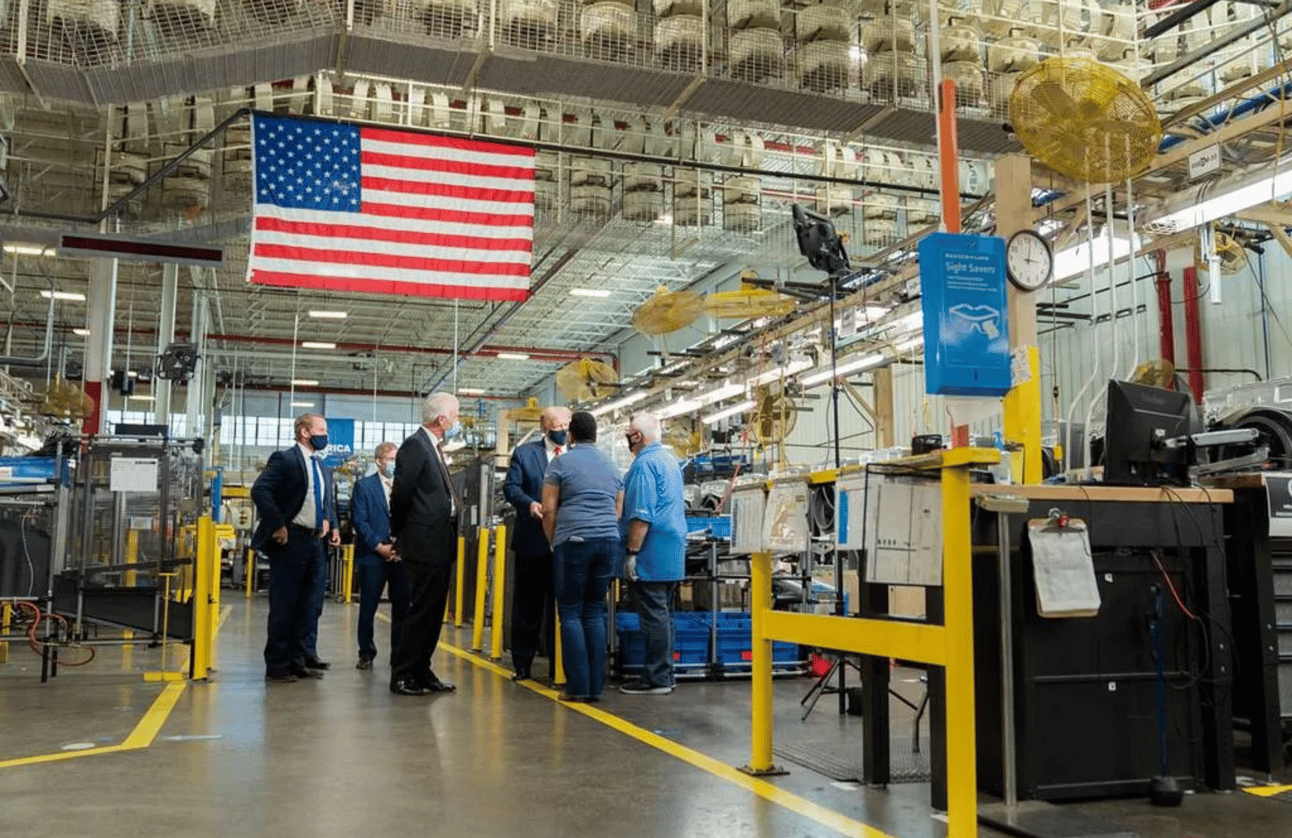- The Money Trails
- Posts
- America's $2T Bet on Manufacturing: Is it Worth It?
America's $2T Bet on Manufacturing: Is it Worth It?
Is Manufacturing the Middle Class's Savior?

 |  |  |
What’s in This Week’s Issue…
Good morning. For decades, America was built on making things. Steel, cars, semiconductors. Manufacturing wasn’t just the backbone of the economy. It was the foundation of the middle class.
Then, we shipped those jobs overseas. Wages stagnated. Towns collapsed. The middle class got squeezed. But now, something is shifting.
There’s a manufacturing renaissance happening in America. And for the first time in decades, it’s not just talk. But is there a darker play that’s not being talked about?
So this week…
🏆 The Big Play: Is American manufacturing really about saving the middle class?
💪 The Power Move: The Dark Side of the subscription apps trap and how you can get out of it
💵 Follow the Money: Why Europe and Canada are seeking alternatives to US fighter jets
-GEN
🏆 The Big Play
The biggest money power story of the week.
Make Manufacturing Great Again?

President Trump visiting a factory
So why is D.C. going all-in on bringing factories and jobs back?
Is the intention to really save the middle class? Or is it being driven by a corporate cash grab?
Here’s what I think:
1. The U.S. Economy Hit a Breaking Point
Starting in the 1980s, American corporations exported millions of factory jobs overseas for cheap labor, higher profits, and “globalization“.
Here’s how manufacturing left in the first place:
After China joined the WTO in 2001, U.S. companies flooded China with outsourcing deals.
3.7 million U.S. jobs were wiped out by the trade deficit with China alone.
Major manufacturers cut costs by replacing union jobs with overseas factories.
The NAFTA trade deal made it easier to offshore jobs to Mexico, where wages were a fraction of U.S. rates.
The result? Entire regions, from Detroit to the Rust Belt, turned into economic wastelands. Young people left in search of work, and those who stayed found themselves in a gig economic trap — low wages, no benefits, no stability.

Flint, Michigan is a perfect example
The decline of manufacturing wasn’t just about factories — it was about people losing their shot at a better life.
2. The Shift Back to Manufacturing is Real
But now, the US is looking to run it back.
The U.S. is seeing a manufacturing revival — the government is pouring billions into industrial policy, especially high-tech production:
And as per the White House, President Trump has secured nearly $2 Trillion in U.S.-based investment since taking office.
But here’s the catch — many of these new jobs aren’t the same as before. Some require advanced skills, others rely on robots, and the pay doesn’t always match the golden era when you could support your two kids and wife working at the factory.
So, is this a true middle-class revival — or just another shift that benefits only a few?
3. But Who Will This Manufacturing Revival Actually Help?
Manufacturing’s return is being built on a foundation of contradictions.
Look at what’s happening on the ground:
The semiconductor industry has proposed a specialized ‘Chipmaker Visa‘ that would allow them to import ‘highly-skilled talent’ under the H1B program.
Geographic inequality might intensify. Most of the new projects have come up in a few states with the Southwest U.S. emerging as a key player.
The manufacturing industry is estimated to create 3.8 new jobs by 2033. However, 1.9 million of those jobs could remain unfulfilled due to skill gaps.
This does not look like the manufacturing industry of the previous generation which employed people of all skill-level levels and didn’t need four-year degrees.
So, can manufacturing save the middle class?
The factories are coming back.
And we could see a lot of new jobs for middle-skill workers which make the most of the middle-class today.
But it remains to be seen if these new factories could do what more than 500 U.S. counties are currently doing for the middle class — providing jobs to middle-skill workers that pay twice as much as the equivalent service-sector jobs.
With all this happening, Uber now using automated cars, and AI’s advancement, what is going to happen to the low-skilled workers moving forward?
💪 The Power Moves
Playbook for understanding the game of power.
The Dark Side of Subscription Traps (and How can you escape them)

Some US subscription apps
Ever tried canceling a subscription and felt like the company was doing everything possible to stop you?
It’s not by accident. It’s by design.
And no one has perfected the subscription trap better than Adobe.
For years, users have complained about how hard it is to cancel Adobe’s subscriptions.
Now, the Federal Trade Commission (FTC) is suing Adobe for deceptive practices. Here’s why:
Adobe’s “Annual, Paid Monthly” plan charges users a 50% early termination fee if they cancel after 14 days. The problem? Most people don’t even know about it until they try to cancel.
Users report getting stuck in loops — multiple web pages, long wait times, and relentless upsell offers before they can even reach the cancel button.
An Adobe executive compared the company’s reliance on early termination fees to “heroin” — a business model hooked on making it as hard as possible for users to leave.
We will keep an eye on what happens, but it’s for sure Adobe isn’t the only company doing similar things.
Here’s how you can escape subscription traps like this:
Search for ‘Cancel + [Company Name]’ on Google to find hidden cancellation pages.
Use virtual cards to block future charges.
Cancel immediately after signing up for free trials (you still get the full period).
💵 Following the Money
Few of the wildest financial and corruption stories from around the world.

An F-35 testing aircraft
✨ Poll time!
Do you think the manufacturing boom will rebuild the American middle class? |


